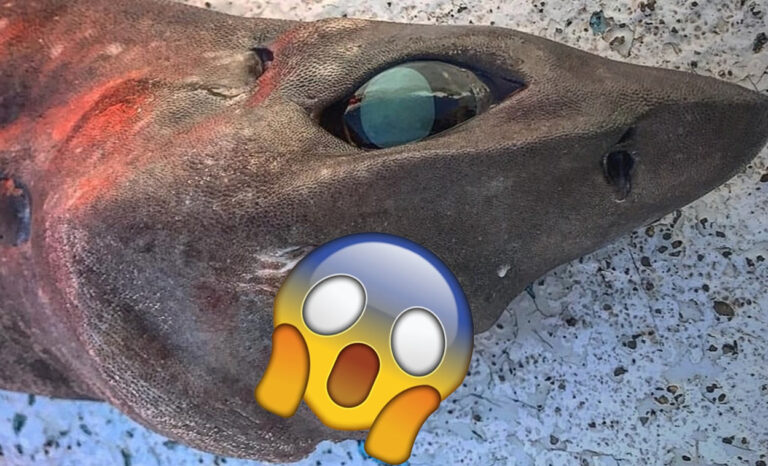Terrifying deep sea shark with bulging teeth caught in Australia
There is a whole lot to be afraid of in the deep sea, where the sunlight barely hits and the unforgiving terrain gives birth to some of the gnarliest creatures humanity has ever witnessed. As of 2022, less than five per cent of the Earth’s oceans have been explored and scientists are still actively discovering what lurks in the dark.
But occasionally, some deep sea creatures are pulled to the surface—in turn, spooking everyone who sets their eyes on them. Such is the case with Trapman Bermagui, a Sydney-based fisherman who recently caught a lifeless sea monster from 2,133 feet underwater off the coast of Australia.
With bulging, glassy eyes peering at the camera, the bizarre creature was found with its mouth curled upwards into a terrifying smile. Its small row of teeth also protruded out from its jaw—featuring a pointed nose resembling a dog.
“The face of a deep sea rough skin shark,” Bermagui captioned a post featuring images of the predator, which has since gone viral on both Facebook and Instagram.

As soon as netizens caught a glimpse of the shark, they quickly dubbed it the “stuff of nightmares” while some joked that it had just gotten its braces removed. “I can’t tell if he has good dental hygiene or if his dentist yells at him,” a user commented. “Looks like Chum from Finding Nemo,” another wrote, comparing the creature to the hyperactive mako shark who is part of the ‘Fish-Friendly Sharks’ support group in the animated movie.
Well, I don’t know about you guys, but Bermagui’s wild catch just looks like a thermocol shark model a soccer mom would make for their kid’s science project to me.
That being said, when most of Bermagui’s followers guessed that the deep sea animal was a cookie cutter shark, the fisherman clarified that it was a species of endeavour dog shark. “Totally not a cookie cutter. It’s a rough skin shark, also known as a species of endeavour dog shark,” he replied in the comment section, later sharing an image of a cookie cutter shark’s mouth to point out the difference.
“These sharks are common in depths greater than 600 metres. We catch them in the wintertime usually,” he continued, adding that his recent catch weighs about 33 pounds and is five feet long.

Dean Grubbs, associate director of research at the Florida State University Coastal and Marine Laboratory, also weighed in on the unlikely predator. In an interview with Newsweek, the expert explained that the species appears to be Centroscymnus owstoni, also called the roughskin dogfish.
“In my deep sea research, we have caught quite a few of them in the Gulf of Mexico and in the Bahamas,” Grubbs said. “Ours have come from depths of 740 to 1,160 metres, so a bit deeper than this report. They are in the family Somniosidae, the Sleeper Sharks, the same family of the Greenland Shark, but obviously a much smaller species.”
That’s great! Now put it back.





